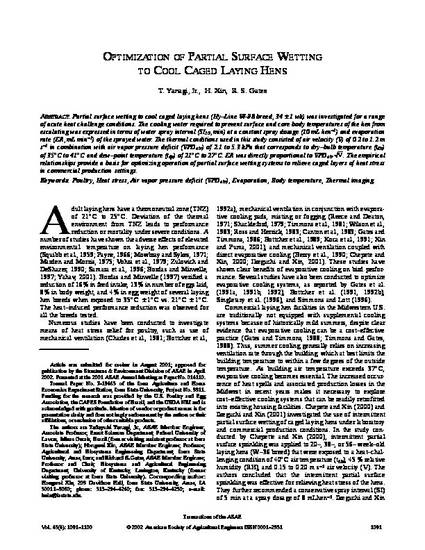
Partial surface wetting to cool caged laying hens (Hy–Line W–98 breed, 34 µ1 wk) was investigated for a range of acute heat challenge conditions. The cooling water required to prevent surface and core body temperatures of the hen from escalating was expressed in terms of water spray interval (SI10, min) at a constant spray dosage (10 mL hen–1) and evaporation rate (ER, mL min–1) of the sprayed water. The thermal conditions used in this study consisted of air velocity (V) of 0.2 to 1.2 m s–1 in combination with air vapor pressure deficit (VPDair) of 2.1 to 5.3 kPa that corresponds to dry–bulb temperature (tdb) of 35³C to 41³C and dew–point temperature (tdp) of 21³C to 27³C. ER was directly proportional to VPDair· V. The empirical relationships provide a basis for optimizing operation of partial surface wetting systems to relieve caged layers of heat stress in commercial production settings.
Available at: http://works.bepress.com/richard-gates/59/

This article is from Transactions of the ASAE 45, no. 4 (2002): 1091–1100.